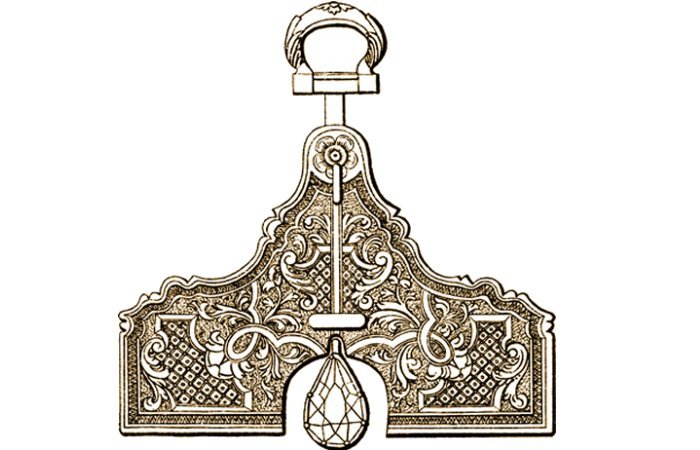by Midnight Freemason Guest Contributor
Erik Antony Marks, 32, LICSW
It is commonly held and well documented that meditation is a practice, since about 1500 BCE in areas of India. From there, the famous story of the Buddha was popularized in the west by Herman Hess’ work,
Siddhartha. Meditation of some form is found in all of the major religions of the world and have significant presence in lesser recognized religions and spiritual practices. We can find in the esoteric branches of the major religions—Gnostic, Sufi, Vajrayana or Tantric, Kabalistic, a strong emphasis on meditation. In Freemasonry we agree that no major task or important venture should be started without the invocation of Deity. Mindfulness meditation can often be used as a preliminary practice to prayer, be mixed with prayer as in Trappist Monk Thomas Merton’s Contemplative prayer, or be prayer in and of itself: a prayer without words, a prayer of presence.
There are gigabytes of resources on the internet about how to practice mindfulness, meditation, contemplative practices. Brother
Chuck Dunning has an excellent book about the subject in relationship to Freemasonry, which I refer to often and recommend highly. You may ask why, then, would I write this? I do better when I find the authors like Dunning, Chödrön, Trungpa, Merton, which speak to me, with whom I feel a more personal connection. The author’s voice gets my attention or a detail they attend to, matches what I need. So, with the hope this will speak to you in a new way, here is my just-past-midnight version of encouragement to use the focus on the breath in mindfulness meditation as a tool.
In my usual vocation, I sit with people to talk about what either matters to, or troubles them most. More than half the time, this involves some form of nervousness, worry, anxiety, or panic. Daily, I return to the practice of sitting still with the mind, my own--theirs. Mindfulness meditation has been such a gift in my own life that from the moment I started working in human services, I’ve tried to incorporate it. There are lots of ways to incorporate the practice. It may mean teaching them to use this technique, or incorporating a practice they already have for a therapeutic purpose. It may come only in the form of practicing on my own time so I may be more present for them. There are times I ask them to stay with something difficult or complicated...don’t move on too quickly, let’s see where this thought/feeling takes us, you. Together, we delineate, circumscribe, an area of mind to attend to and stay within those bounds, intentionally. When we draw the lines, we know when we are outside, when our desires or passions have pulled us from our intended place or course of action.
Many people find they get stuck in thought loops, ruminate, worry: “I’ve always been a worrier” I hear multiple times a month. When in those states, it can feel challenging to get some distance on the mental process. It can even be difficult to remember to stop to practice or work with the mind in some moments: we are caught in a passion about reality, or concerned about a potential scenario. We may experience a fear of our own creation and then blow it out of proportion in our thoughts. We may churn about the future, or running over the same ground of a past experience or exchange that bothers us or how we may have hurt someone we care about. All of these are workable, with practice.
I like focusing on the breath since its with us wherever we go. In most situations, the people with whom I meet agree on this focal point and find it useful. I encourage them to focus on the rise and fall of their belly or the feel of the air moving in and out of their nostrils. Don’t try to change or control the breath, just try to notice it as it is happening. When your mind wanders to anything, say to yourself: “thinking,” and come back to the breath. This is akin to getting out the mental gavel and “knocking off” an idea. There is no judgement involved, the rough edge, thought, simply needs to be removed in that moment for the ashlar to become smoother. Over the course of a minute, that process of leaving with an idea and coming back can happen many times. Sometimes we “leave” with a thought and significant time goes by before we realize we’ve forgotten the intention to return. Its ok, its only thinking. Caveat: in some religions, denominations, or spiritual practices thoughts are not “just thoughts,” they are sin. The only claim I’m making is that for the purpose of dealing with the here and now psychology of human experience, thoughts are a cognitive process, contained in our minds, until we take action, which includes speaking. A longer conversation could occur about the use of mindfulness practice to enhance prayer and/or focus, generally, as well as the remedy for thoughts as sin.
Many people return to the next session and say “It didn’t work,” or “I failed,” or “I don’t think I did it right.” I know, it happens to me too, every week. If you sat down to have a practice, put in some intentional effort, you probably did it right. Having strong feelings, mind wandering, or getting angry with self for wandering are all part of the practice and evidence its proceeding correctly. Compassionately label it all as thinking and return to the focal point--subdue the criticism. We become more adept over time, and minds still wander. I once presented with a colleague at a college health conference in which he said: “The mind secretes thoughts like the pancreas secretes insulin.” It seemed apropos. We may not be able to stop thoughts or emotions from arriving, but we can work at what to do with them once they are here. Sometimes we don’t want to be as vigilant and we indulge a little. It's ok, you’re learning your own process and how passions pull at the mind. If you cut corners, you’ll know; there is no need to be harsh or mean with yourself, just try it differently next time. You’ll see, know, and feel it.
Sometimes sitting still in silence can cause us to worry more or feel increasingly anxious. It may be so intense you may want or need to “stop early.” You can and you may. I encourage taking the longest, slowest, deepest, and most quiet breath possible before stopping and then, stop: breathe in for as long as you can, hold it as long as you can, then exhale as long as you can stand it. Done. The meta-process of that self-intervention is that moment you subdued the need to escape your experience by superimposing another on top of it. You offered your conscious mind an idea and physical process to focus on instead of focusing on, and amplifying, the anxiety about the experience of the moment. Breath as tool; breath as compasses. In that moment you taught your amygdala that the fear of the moment gripping you was not, in fact, a saber-tooth tiger about to scramble your consciousness and wreak ruin in your life. You reprogrammed, rewired, your brain…just a little bit. In return, some part of the brain, and you, said: “huh, I didn’t lose it, I didn’t freak out…I’m ok...maybe I could have tolerated a little more.” Staying present at the boundary and observing allows an unique vantage point of our felt pain or discomfort in the moment; it allows us to recalibrate our gauge and then measure our emotional experience of time differently. Then next time that nervousness or anxiety happens, you may feel calmer, grounded, centered. You may be better prepared with the lesson from the previous experience and you may feel a little less worried: try two long breaths this time before stopping. Note: for the vast majority of people, these tools don’t work in the midst of full-on panic.
Last year, I attended a memorial service for a good friend, colleague, mentor, at a friend’s (Quaker) meetinghouse. My memory of the instruction was: sit in silence until you feel moved to speak. Though wait and see if you are moved to speak by divinity and not by some other purpose (ego, showing off, being heard). Many times through the service I felt a swell of emotion and memory, and wanted to say something. But I waited and in each instance, the something was about me, not about my friend, really. There was no sermon, not liturgical charge, no directive, no rapturous music, just silence and the words of others who felt moved to speak. It was one of the most powerful “services” I had attended. I believe it was one of the most powerful because the instruction was to fully attend to the moment and my use my working tools to shape the expression of my intentions: my work was to be fully present for, and honest with, myself in the service of the memory of my friend and those in the room.
Sitting still with one’s mind doesn’t change the present, or the problems. Jon Kabat-Zin (Full Catastrophe Living) and Saki Santorelli (Heal thy self) at UMass Medical Center have decades of data about how mindfulness meditation helps with pain management, increasing tolerance to stress, improving mental functioning, shortening recovery times from illness to name just a few. Mindfulness as a daily practice isn’t a panacea, but it does help us know ourselves better, and be more understanding of our process. It helps us be less reactive and more present. It causes us to deny nothing and feel ready for anything. Even thirty seconds a day can help the mind keep coming back to the present or keep the idea of not reacting on the menu card of the moment. The more we work with our tools, the more proficient we become. The more we practice, the greater the probability we will be able to subdue our passions in the moments they occur.
Brother Erik A. Marks, 32º, LICSW, is a clinical social worker whose usual vocation has been in the field of human services in a wide range of settings since ’90. He was raised in ’17 by his biologically younger Brother and then Worshipful Master in Alpha Lodge in Framingham, MA.











